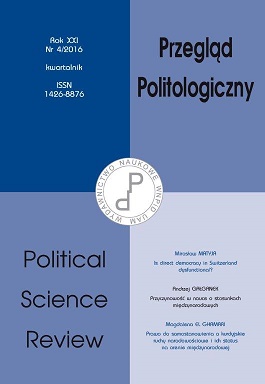Serbskie wybory: droga ku Europie?
Serbian elections: The path towards Europe?
Author(s): Natasza Lubik-ReczekSubject(s): Government/Political systems, International relations/trade, EU-Accession / EU-DEvelopment
Published by: Uniwersytet Adama Mickiewicza
Keywords: Serbian elections; parties; European Union; Kosovo;
Summary/Abstract: The Republic of Serbia was established on 5 June 2006 as a legal successor to the state of Serbia and Montenegro which dissolved after Montenegro had declared independence on 3 June 2006. Serbia and Montenegro were constituted as a union of two republics on 4 February 2003 and replaced the Federal Republic of Yugoslavia. The latter was created on 27 April 1992 and was composed of the Republic of Serbia and the Republic of Montenegro.This article has as its main goal to answer the following questions: Will Serbian elections ensure the country’s continued path toward Europe and is Serbia ready for EU membership? Serbia’s integration with the European Union strengthened after pro-European Boris Tadić was elected the country’s president in 2004. The largest hurdles to Serbia’s EU accession are, firstly, the issue of Kosovo’s independence, and, secondly, putting those responsible for war crimes in former Yugoslavia on trial before the Hague Tribunal. Serbia’s EU integration process has been quite protracted and the country would like to finish its negotiations by 2019 in order to join the European Union officially in 2020. The European Commission has declared a moratorium on accession of new members during the current term of both the Commission and the European Parliament, which will expire in 2019. In April, Ivica Daczić and Hashim Thaci signed a negotiated agreement under the EU auspices to normalize the relations between the two countries. Kosovo, a former Serbian province mostly populated by Albanians, declared independence in 2008, which Belgrade has never recognised. The agreement does not provide for Serbia’s formal recognition of Kosovo’s sovereignty, but it regulates the situation in northern Kosovo which has a 40,000-strong Serbian minority. Both parties have also agreed not to block each other on their path to EU membership.
Journal: Przegląd Politologiczny
- Issue Year: 2016
- Issue No: 4
- Page Range: 27-36
- Page Count: 10
- Language: English

